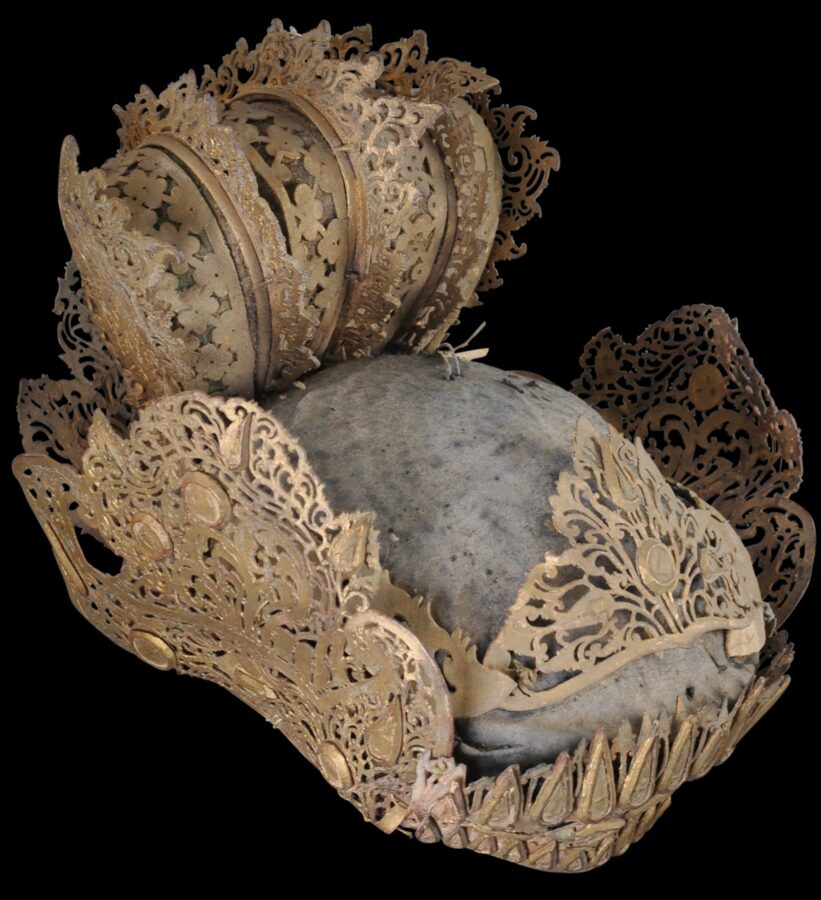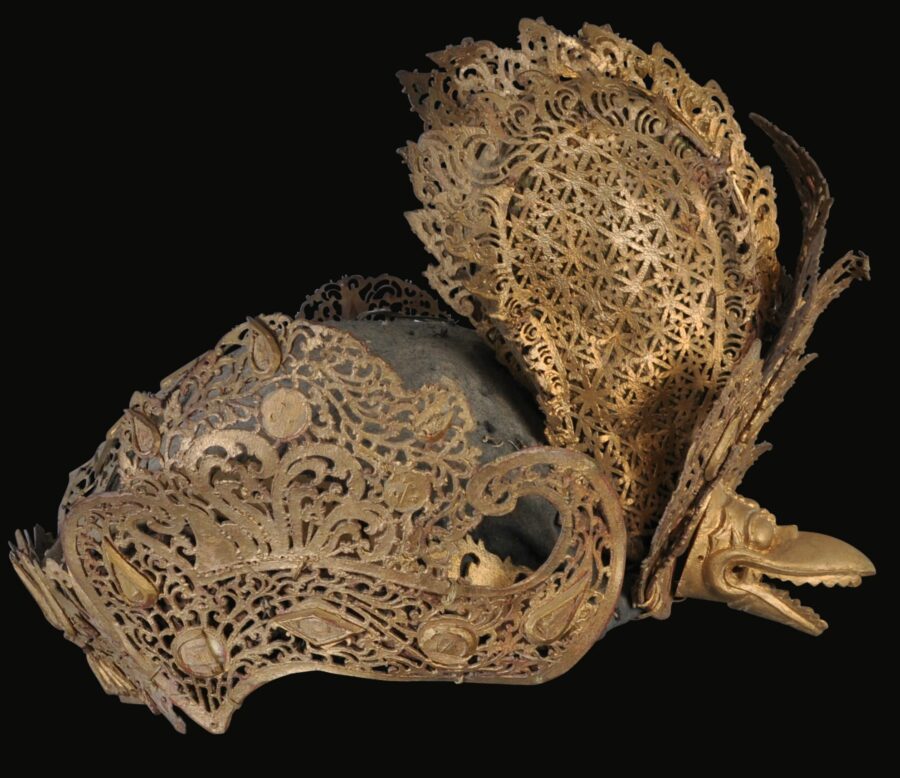This Balinese dancer’s crown comprises many gilded, pierced, wing-like elements of rawhide (probably deer hide) pieced together over a helmet of gilded cloth over a very finely woven split bamboo substrate. This bamboo substrate is clearly visible inside the crown, and is in its own right particularly masterful. The back of the crown has also been fitted with a carved wooden garuda head, also gilded.
Such crowns were worn by legong dancers on Bali, who performed traditionally as royal entertainment. The dances were characterised by intricate finger movements, complicated footwork, and expressive gestures and facial expressions, which occasionally included the dancer adopting a pose, and remaining completely motionless other than moving the eyeballs to the music, usually provided by a gamelan orchestra.
Typically, a crown such as this would have been worn by a male dancer playing the role of a prince, king or deity. Sometimes, it would be augmented with the addition of fresh, fragrant frangipani flowers.
The significance of the garuda being on the back of the crown is that it is looking backwards and was called the garuda mungkur or ‘the bird Garuda pointing backwards’ and is said to protect the wearer of the headdress. In Balinese paintings too, deity and hero figures often are shown wearing a headdress with a protective garuda mungkur.
Certain legong dancers’ crowns were believed to sacred and imparted to the wearer a trance-like state.
The example here was in the personal collection of the well-known Dutch artist Rudolf Bonnet who lived on Bali and painted Balinese scenes. Bonnet (1895-1978) lived most of his adult life in Ubud, Bali, from 1929. It is possible that the crown here was used as a prop in his studio. In any event, Bonnet amassed a large collection of Balinese antiques and artworks by Balinese artists.
The crown is in good condition. Some elements are loose as befitting its age but overall, the crown seems intact.

Pastel of a Balinese dancer wearing a garuda mungkur crown similar to the example here, Rudolf Bonnet, dated 1975
References
Brinkgreve, F., & D.J. Stuart-Fox (eds), Living with Indonesian Art: The Frits Liefkes Collection, Rijksmuseum Volkenkunde, 2013.
Reichle, N. (ed.), Bali: Art, Ritual & Performance, Asian Art Museum, 2010.








